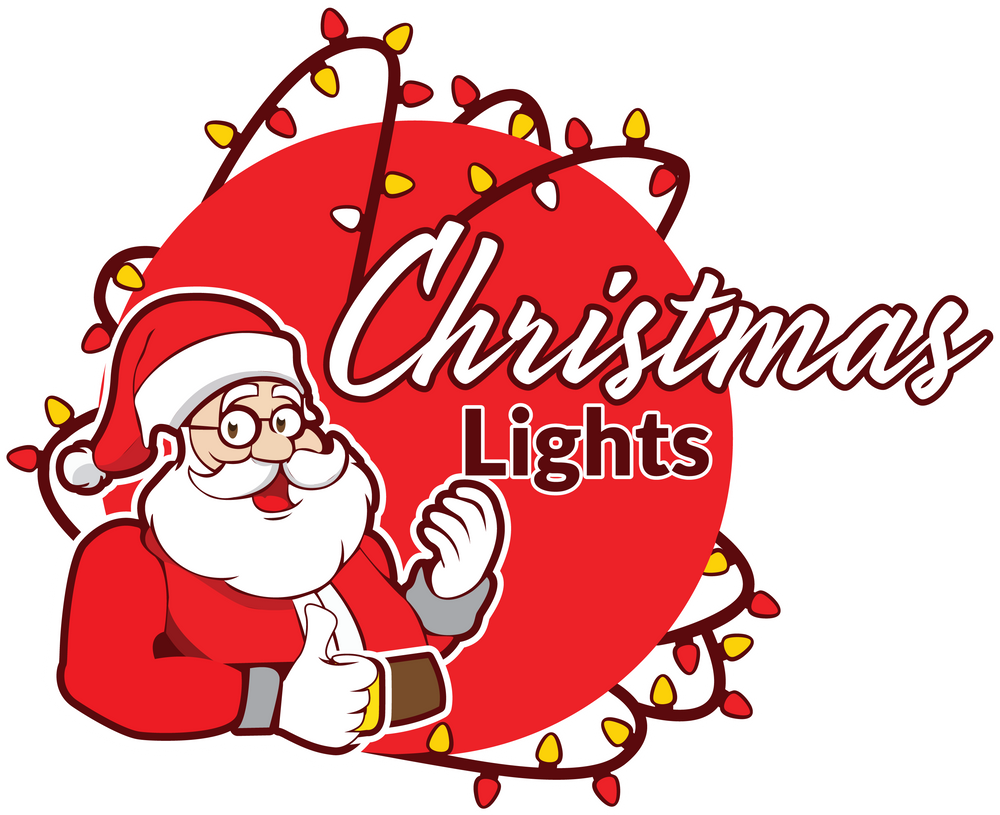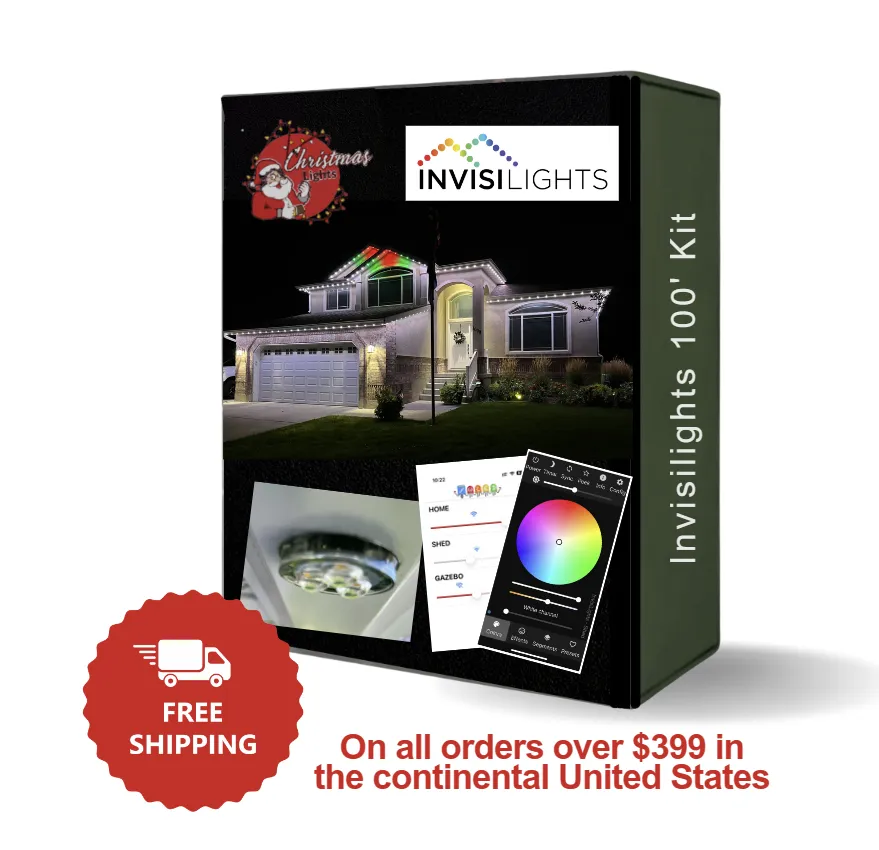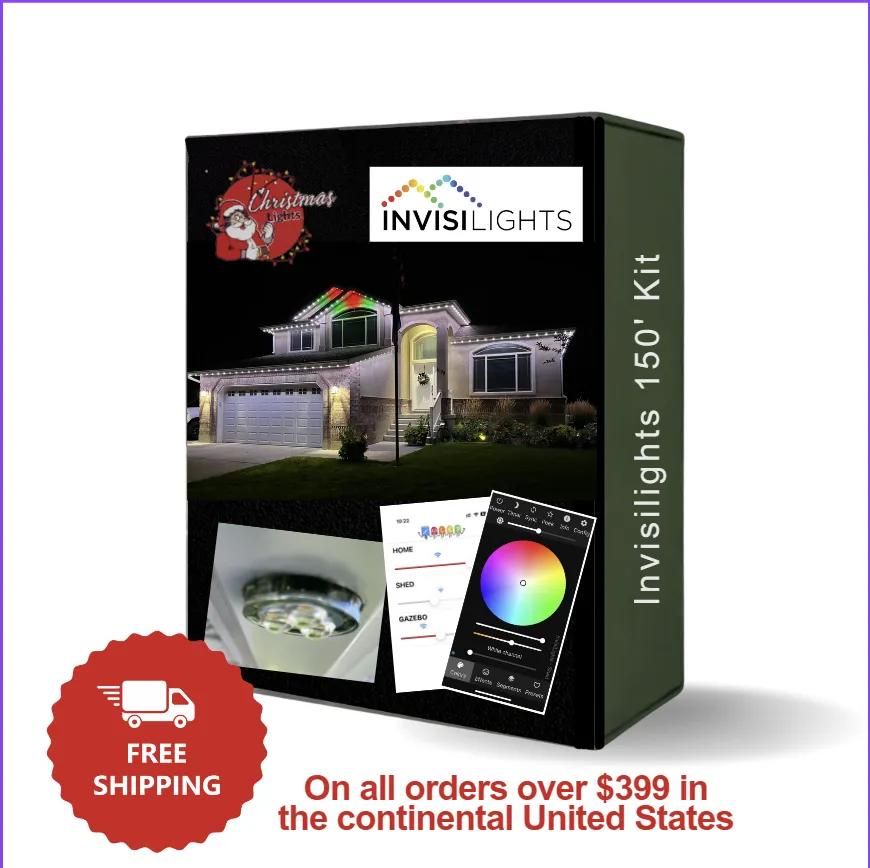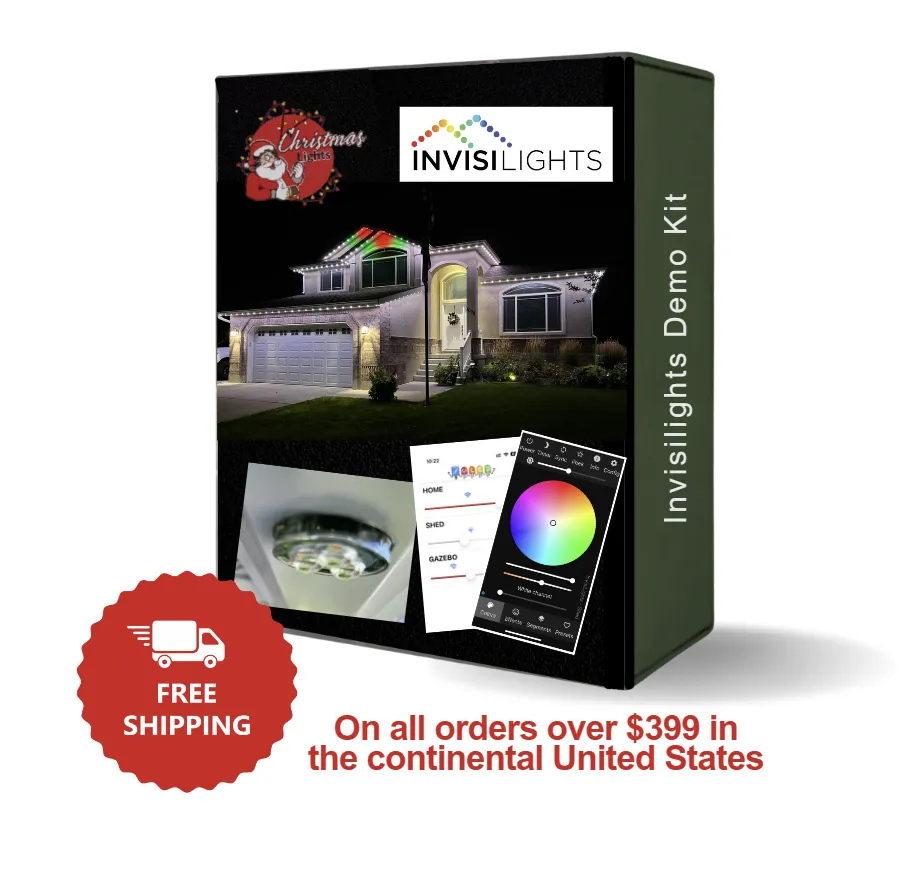Invisilights
Permanent Holiday Lighting
Customizable Lights for Any Event
WHAT YOU NEED TO KNOW BEFORE ORDERING
Total Linear footage of the installation.
This should include footage of lights and channel along with any Extensions or jumps you'll need to make
Where your controller box will be located
This is the most important step to planning out an installation, Without knowing where the controller will be you'll have no way to know the right materials to buy when it comes to extensions and accessories.
What Voltage system you want to use 24V or 36V
This is a decision you will make based on convince and efficiency, the most important factor with this will be the footage of each lighting run. If the total footage of a run is over 100' you'll need to either power inject on that run or switch to the 36V system that can go up to 200' before needing power injection.
Draw a Map
By mapping out the installation you'll be able to better understand and plan out the install giving you a better idea of what all you'll need to purchase to complete the job.
take the measurements from your map and add up the total number of materials you'll need.
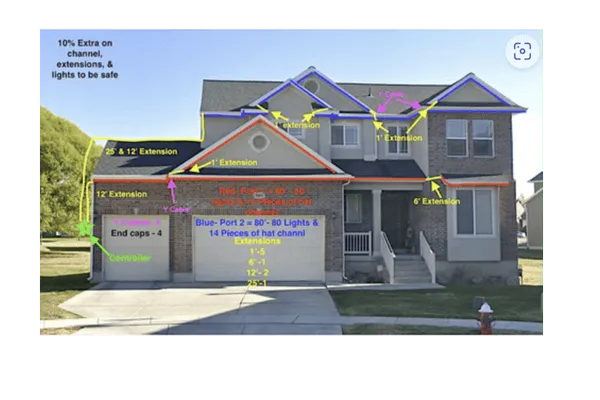
For the Map out example above the total material breakdown is:
System Voltage: 36V
Color of channel: Cameo
Channel Type: Hat
Total Lighted Footage: 160'
Power injection: NO
Controller: 1
Channel: 27- 6' sticks
Screws- 200
Lights: 175
1' extensions-7
6' Extensions-2
12' extensions-2
25- extensions- 1
Y Cables- 3
End caps- pack of 10
Absolute necessities
-Controller
-Lights
-Channel
-Screws
-Extension cables
Other Accessories
-Y Cable
-End Caps
- Signal boosters
-Power injection material
When would you need to power inject?
The controller will come with 3 outputs for your lighting runs, each 36V output can do a Max of 200', the 24V system can do a max of 100'. After that max you'll need to inject power. After you do so you can go an additional 100' with the 24V or 200' with the 36V system.
Power injection is needed due to voltage drop, voltage drop happens due to the length traveled away from the power source along with the gauge of the wire. due to the gauge of wire the lights and extensions run on it drops in voltage enough at 100' with the 24V system and 200' with the 36V system to effect the lights performance requiring a addition of power (Power Injection)
Materials needed for power injection 36V
Power injection pig female pig tale
Power injection Extension cables
Power injection T Cable.
Materials needed to Power inject 24V
16/2 - 12/2 Low voltage landscaping wire
Cut and Splice T cable
Water Proof Wire connectors
Discover the Transformative Power of Invisilights: Expertly Installed Permanent Lighting Solutions
Enhance your installation offerings with Invisilights, the premier permanent lighting solution designed for seamless integration into any property’s exterior architecture.
Crafted with high-quality aluminum channels and advanced LED technology, Invisilights delivers durability and superior energy efficiency—key selling points for your clients seeking long-lasting, cost-effective lighting solutions. Our system not only provides brilliant illumination but also boosts the aesthetic appeal and functionality of any home.
Offer your clients peace of mind with our robust 5-year warranty, ensuring reliable performance and minimal maintenance needs. This warranty supports your commitment to quality and customer satisfaction, making it easier for you to sell and install with confidence.
Our flexible, programmable system allows you to meet any client’s specific desires—from subtle accents to full-scale holiday displays—making it an adaptable choice for various applications. With Invisilights, you can cater to a wide range of preferences and needs, increasing your market reach and customer retention.
Choose Invisilights for your installations and add a transformative product to your portfolio that will impress clients and ensure your services remain in demand for years to come.
Frequently Asked Questions
What exactly comes in the 150' InvisiLights permanent outdoor lighting kit?
The InvisiLights kit is comprehensively equipped to ensure you have everything you need for installation. Each kit includes:
27 sticks of 6-foot Aluminum Channel to house and protect the lighting elements.
150 feet of dynamic RGBW LED Lights, which includes 23 sets of 6-count and 14 sets of 1-count lights, allowing for extensive coverage and diverse configuration options.
2 Data Boosters to enhance signal strength across the lighting installation, ensuring consistent control and color output.
A 320W Power Supply capable of supporting up to 190 puck lights, providing ample power for even the most extensive setups.
1 GFCI Outlet Adapter to ensure safe outdoor electrical connections.
1 Controller that allows you to manage and customize the lighting effects easily.

Will I need any additional components besides what's included in the Invisilights permanent lighting kit?
While the Invisilights kit comes with all the essential components for a standard installation, there are a couple of scenarios where you might need additional items:
Jumper Wires: Depending on the layout of your installation and the number of gaps or 'jumps' between the sections of lights, you may require jumper wires. These wires help bridge the gaps without losing the continuity of the light sequence, ensuring a smooth and uniform display across more complex architectures.
Data Boosters: If any section of your lighting setup is more than 15 feet away from the control box, additional data boosters will be necessary. Data boosters help maintain the integrity and brightness of the lights over longer distances, ensuring consistent performance throughout your installation.
Can I choose the color of the aluminum channel for my InvisiLights kit?
Yes, you can select your preferred color for the aluminum channel to match your home’s exterior or personal taste. Please make sure to specify your color choice in the notes at checkout when you place your order.
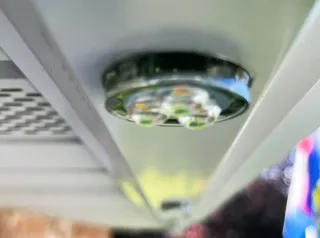
How do the included components of the InvisiLights kit enhance the lighting system?
Each component in the InvisiLights kit plays a crucial role in creating an effective and stunning lighting display:
Aluminum Channels: Provide a durable, weather-resistant housing for the LED lights, which helps in maintaining a clean and nearly invisible look during the day.
RGBW LED Lights: Offer vibrant, full-spectrum color and white light combinations, making it perfect for any occasion from festive holidays to elegant ambient lighting.
Data Boosters: Ensure that the signal remains strong across longer distances, which is crucial for larger installations.
Power Supply: Designed to efficiently handle the energy needs of the system without overload, ensuring safety and durability.
GFCI Outlet Adapter: Adds an extra layer of safety by protecting against electrical shorts and surges, particularly important in outdoor settings.
Controller: Provides the flexibility to customize and control the lighting sequences, colors, and patterns right from your smartphone or controller, adding convenience and advanced functionality to your lighting system.
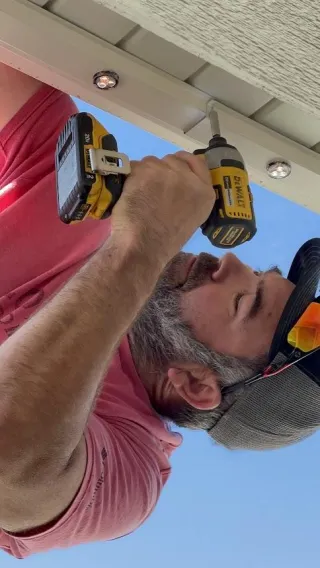
Can I use Invisilights year-round?
Absolutely! Invisilights are designed for versatile use throughout all seasons. Whether you're celebrating a special occasion, setting a mood for a party, Love your favorite sports team, or simply enhancing your home's ambiance, our lighting systems provide the perfect solution for any event, big or small.
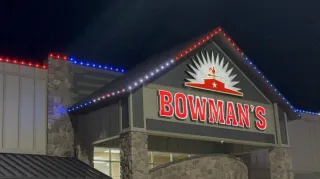
Can I set timers and events for Invisilights?
Yes, Invisilights feature advanced programmable settings that allow you to schedule lighting for specific events and automate timers. This functionality ensures that your lighting preferences are perfectly aligned with your lifestyle, turning on and off at predetermined times without any manual intervention.
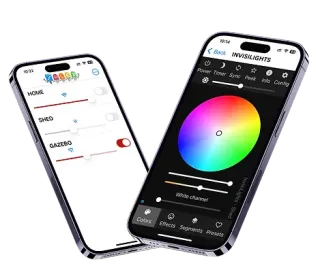
Is it possible to achieve warm or soft white with Invisilights?
Absolutely, Invisilights are equipped with RGBW technology, which includes a dedicated white LED alongside the standard red, green, and blue LEDs. This addition allows the system to produce authentic warm white, soft white, and various other shades of white with greater accuracy and intensity compared to traditional RGB systems. This capability ensures that you can effortlessly tailor the lighting to fit the desired ambiance and aesthetic of any environment, providing precise control over both vibrant colors and the subtlety of different white tones.

How do you ship your product?
Our products are shipped directly from our warehouse using reliable shipping carriers to ensure timely and safe delivery. Each product is securely packaged to prevent damage during transit, and we provide tracking information so you can follow your order’s journey to your doorstep.
Where are the controller and power supplies installed?
The controller and power supplies for Invisilights are typically installed in an accessible location such as a garage or utility room. These components connect to your home’s WiFi network, allowing seamless control over the lighting system via our user-friendly mobile app.
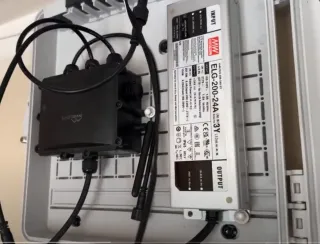
How long do Invisilights last?
Invisilights are engineered to last, with each LED bulb boasting a lifespan of over 50,000 hours. Given a typical usage of 10 hours per night, this translates to approximately 5,000 nights. This means your Invisilights could illuminate your home's exterior for nearly 14 years under these conditions, ensuring that your investment not only adds beauty but also long-term value to your property.
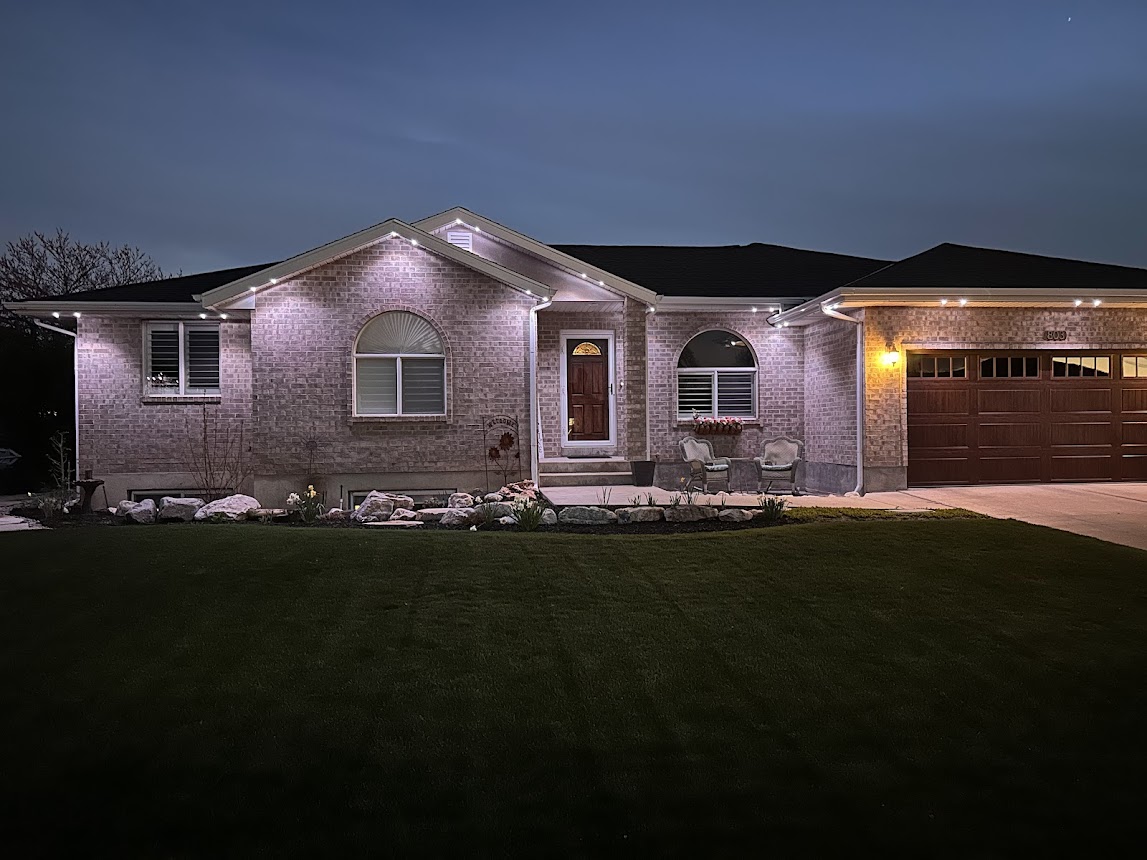
Are Invisilights dimmable?
Yes, all Invisilights are fully dimmable. This feature allows you to adjust the intensity of the light to suit various occasions, from a soft glow for a romantic evening to bright, vibrant colors for a festive celebration.

What types of custom channels are available?
Invisilights offers two types of custom channels, available in 40 different colors, ensuring a nearly invisible installation. These channels are designed to blend seamlessly with your home’s architecture, providing discreet yet effective lighting.

Can I control different zones independently?
Yes, the Invisilights system supports multiple zones which can be controlled independently or synchronized. This functionality allows for intricate lighting designs that can vary across different areas of your home, enhancing the overall impact and utility of your installation.

What is outdoor permanent lighting?
Permanent lighting refers to architectural-grade lighting systems that are installed permanently on your property to provide year-round illumination.
How does permanent lighting differ from traditional holiday lighting?
Unlike traditional holiday lighting, which is typically temporary and used only during specific seasons, permanent lighting is installed once and can be used throughout the year for various occasions
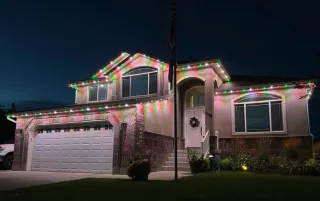
Discover Expert Tips on Our Blog

From $600 to $2,000 Jobs: The ONE Thing That Changed Everything
Most Christmas lights installers hit a revenue ceiling not because they lack technical skill or work ethic, but because they've trapped themselves at low average tickets. The difference between generating $50,000 and $200,000+ in a season often comes down to one number: average ticket price. Moving from $1,000 to $2,000 per job doesn't just double revenue—it transforms the entire business model, creating space for hiring, systems development, and actual profitability.
This guide reveals the exact strategies successful installers use to break through the $1,000 ceiling and consistently close $2,000-$3,000 jobs. Whether you're in your first season or looking to scale an established business, these principles will fundamentally change how you quote, present, and close Christmas lights installations.
Understanding Average Ticket: The Most Important Metric
Before discussing strategies to increase average ticket, you must know your current number. Too many installers respond with vague estimates: "Somewhere between $800 and $1,000." This imprecision signals they're not tracking the metric that determines their business success.
Calculating average ticket is simple mathematics: Total revenue divided by number of completed jobs. If you've generated $50,000 from 50 installations, your average ticket is $1,000. If you've done 40 jobs for the same $50,000, your average is $1,250. This number matters because Christmas lights is fundamentally a math game.
Why Average Ticket Determines Everything
Consider the work required to generate $10,000 in revenue:
At $1,000 average ticket: 10 separate installations, 10 quotes, 10 customer conversations, 10 setups, 10 teardowns, and maximum windshield time driving between properties.
At $2,000 average ticket: 5 installations for identical revenue. Half the customer management, half the logistics, half the risk exposure—and likely higher profit margins.
The windshield time alone—driving between jobs—represents one of the biggest profit killers in this business. Every minute spent driving is time not generating revenue. Fewer, larger jobs mean more efficient operations and better profitability.
One successful installer increased average ticket from $1,700 to $2,000+ by implementing a single change: adding ridge lines to every quote. That extra 50-75 feet of lighting on peaks and ridges added $400-$600 per job while requiring minimal additional installation time. Multiply that across 50-100 annual installations, and it represents $20,000-$60,000 in additional revenue.
The Packaging Strategy: Never Quote Just the Basics
The fastest way to remain stuck at $1,000 average tickets is quoting only what customers explicitly request. When someone asks for "Christmas lights on the front of my house," most installers quote the front roofline and nothing more. This approach caps revenue at $800-$1,200 regardless of property size or customer budget.
Successful installers present comprehensive packages that showcase what's possible:
Essential Package Components
Front Roofline (Gutters and Peaks): The foundation, but never the complete offering. This typically represents $600-$1,000 depending on footage.
Ridge Lines and Architectural Details: Adding peaks, hips, and ridges creates dramatic visual impact while adding $400-$800 to each job. Many customers don't even know to request these features—they simply assume professionals will recommend what looks best.
Ground Stake Pathway Lighting: Lining the walkway from sidewalk to entrance adds $300-$500 and creates cohesive design. This feature often sells itself when presented in mockups.
Tree Wrapping: Most properties have 2-3 visible trees worth wrapping. At $40 per foot of tree height, this adds $800-$1,800 to average tickets. A 10-foot tree is $400, a 15-foot tree is $600.
Columns and Architectural Features: Wrapped columns range from $100-$600 each depending on height. Four columns at $150 each adds $600.
Wreaths and Decorative Elements: 48-inch or 60-inch wreaths at $350-$600 each provide high-margin additions requiring minimal installation time.
The principle is simple: customers cannot buy options you don't present. If you only quote the front roofline, that's all you'll ever sell. Present everything, and customers self-select based on budget and vision.

The Psychology of Cheap Pricing: Why $6 Per Foot Keeps You Broke
Many installers charge $6 per foot believing higher prices won't work in their market. This self-limiting belief creates unsustainable businesses that collapse under their own operational weight.
The Real Cost of Underpricing
Materials: Quality LED C9 sets, clips, and accessories cost $150-$200 per 100 feet when purchasing professional-grade products.
Labor: At $80-$100 per installation for a 100-foot roofline (assuming efficient crews), labor consumes significant margin.
Insurance, Overhead, and Risk: General liability insurance, vehicle costs, equipment maintenance, and the inherent danger of rooftop work represent real expenses often ignored in cheap pricing.
At $6 per foot: A 100-foot roofline generates $600. After $150 materials and $90 labor, gross profit is $360 before overhead and risk consideration. Net profit might be $250-$300.
At $8 per foot: The same job generates $800. With identical costs, net profit increases to $450-$500—60-80% more for identical work.
At $10 per foot: Revenue hits $1,000, with net profit around $650-$700. This represents 2.5x the profit of the $6 installer for the same physical work.
Scale this across 50 installations annually, and the $10 installer earns $32,500 in net profit compared to $12,500-$15,000 for the $6 installer. That's $17,500+ more—enough to hire help, invest in marketing, or simply earn fair compensation for dangerous work.
One installer raised prices from $4 per foot to $8 per foot and discovered something remarkable: the "crappy customers" disappeared. Price shoppers, constant negotiators, and problem clients self-selected out. His business became more profitable and dramatically less stressful.
Overcoming the "My Market Won't Pay That" Myth
This excuse appears in every market. Dallas installers insist nobody pays more than $6. Idaho installers claim $4 is the maximum. Maryland installers swear $3 is the ceiling.
Yet in every single market, other installers successfully charge $8-$12+ per foot. Same ZIP codes, same customer base, same competition—different results.
The Real Barrier: Your Mindset
The book "No BS Marketing to the Affluent" by Dan Kennedy emphasizes a critical truth: affluent customers think differently than you think. They're not seeking the cheapest option—they're seeking the best experience, most reliable service, and least hassle.
Consider the typical premium customer profile: They live in a home with an $8,000-$10,000 monthly mortgage. They drive a vehicle with a $2,000 monthly payment. They spend $300+ monthly at Starbucks—$3,600 annually on coffee alone.
Yet installers worry these customers won't invest $1,500-$3,000 in professional holiday lighting? The disconnect reveals the real problem: installers don't believe they're worth premium pricing, so they communicate that uncertainty in every sales conversation.
If you believe your market won't pay $8-$10 per foot, you're 100% correct—not because the market can't support it, but because your lack of confidence guarantees customers will negotiate down or choose competitors. Your belief becomes reality.
One installer in rural Georgia—a 17-year-old in his first season—consistently closes jobs at $10 per foot. If a teenager in a rural market can command premium pricing, the "my area won't pay" excuse crumbles completely.
The Sales Process: Why Customers Want Christmas Lights
Most installers never ask the most important question: Why do you want Christmas lights?
The typical answer—"I think they're pretty" or "I want a nice display"—is surface-level thinking that leads to commodity pricing. Dig deeper with follow-up questions:
"What's special about this Christmas?"
"Who's visiting during the holidays?"
"What memories are you hoping to create?"
"Have you always loved Christmas lights?"
These questions uncover emotional drivers that justify premium pricing:
Grandchildren visiting: Creating magical memories for kids they rarely see makes price irrelevant. The experience is priceless.
First Christmas in new home: Establishing traditions and making a statement in the neighborhood drives budget up significantly.
Competing with neighbors: Friendly competition or desire to have the best-decorated home removes price sensitivity.
Last Christmas due to illness: When time is limited, families invest heavily in creating perfect memories.
When you understand the emotional why, you're no longer selling bulbs and clips—you're selling irreplaceable memories and magical experiences. That justifies $2,000-$4,000 investments easily.
Practical Implementation: Getting the Phone to Ring
The best pricing strategy in the world is worthless without leads. To consistently close $2,000+ jobs, you need volume and momentum.
Proven Lead Generation Strategies
Yard Signs: Deploy 100+ signs weekly in target neighborhoods. Track which locations generate calls to optimize placement. This remains highest-ROI marketing for local service businesses. Some installers generate $100,000+ annually from yard sign leads alone.
Google Business Profile Optimization: Post daily with installation photos, customer testimonials, and project updates. Respond to every review immediately. Ask for reviews systematically after every installation using QR codes or tap cards.
Facebook Marketing: Organic posting builds brand awareness. Join local neighborhood groups and provide value without spamming. When people ask for recommendations, your consistent presence pays dividends.
Facebook Advertising: Expect $15-$30 per lead with optimized campaigns. Include budget qualifiers in ads ("Starting at $900") to filter out customers expecting $200 jobs.
Door-to-Door Canvassing: Walk one neighborhood repeatedly until achieving 90% yes/no responses. Name-drop neighbors who've booked to create social proof and momentum within communities.
The key is consistent action. One installer advertised a month before thinking it was "too early"—his phone hasn't stopped ringing. Early marketing builds momentum that pays off when peak season arrives.
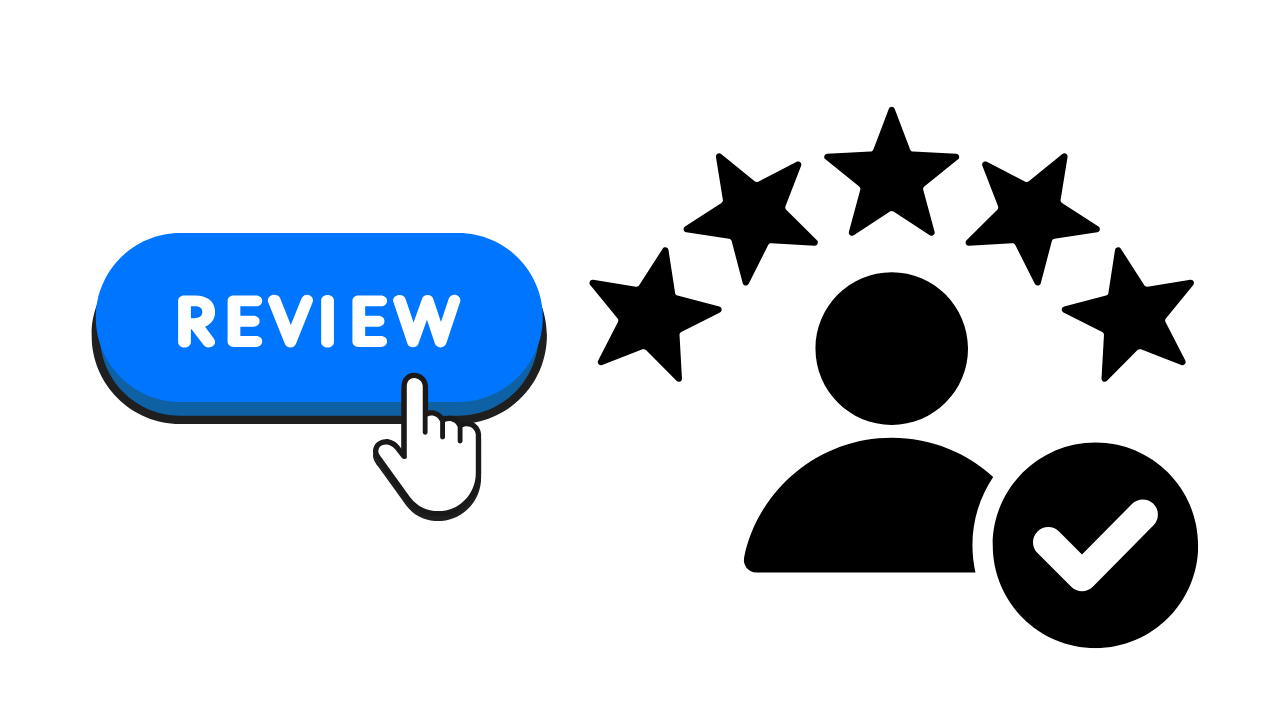
Review Generation: The Long-Term Growth Strategy
Reviews may not dramatically impact this season (unless you already have 50+), but they determine next year's success. Implement systematic review requests:
The Review Request Process
During Initial Phone Call: "Our goal is to make you so happy you'll give us a five-star review. Is there any reason you wouldn't give us five stars?"
Upon Arrival: "My goal today is to make you so happy you'll want to give us a five-star review and tell all your friends."
At Job Completion: "Is there any reason you wouldn't give us a five-star review?" When they say no, immediately pull out your phone with QR code or tap card: "Perfect! Just scan right here and it takes 30 seconds."
Tools that accelerate review generation:
QR Code Review Cards: Print cards with QR codes linking directly to your Google Business Profile review page. Hand these to customers at completion.
NFC Tap Cards: Customers tap their phone to the card and the review page opens automatically—even easier than QR codes.
Incentivize Your Team: Pay bonuses for reviews. $10 if their name is mentioned, $25 for video reviews. This motivates crews to deliver exceptional service.
Don't limit reviews to Google. Collect them on Yelp, Facebook, and even Thumbtack. With AI integration, these platforms increasingly influence local search results.
Safety Investment: Protecting Your Most Valuable Asset
Premium pricing enables proper safety equipment investment. Cheap pricing forces cutting corners that lead to catastrophic injuries.
One installer fell 30 feet from a roof, landed on concrete, and broke both legs. It wasn't steep pitch or poor equipment—he simply stepped backward without looking. The medical bills, lost income, and recovery time far exceeded any savings from cheap pricing.
Essential Safety Equipment
Proper Footwear: Cougar Paws ($200) or specialized Christmas lights shoes ($40) provide roof traction that standard shoes cannot. Hey Dudes and Vans are inadequate and dangerous.
Pitch Hoppers: These platforms ($115-$130) provide stable working surfaces on steep pitches. Choose 30-inch models for maximum space.
The Goat Steep Assist: This tool ($600-$700) provides handholds and stability on challenging roofs.
Ridge Pro: Screws into ridge caps, creating anchor points for stability or harness attachment.
Ladder Stabilizers: Prevent ladders from slipping or denting gutters—inexpensive insurance against falls.
Ladder Levelers: Ensure stability on uneven ground without using rocks or logs.
Mr. Longarm Poles with Hooks: Pass materials to roof workers safely rather than throwing supplies up (which causes balance loss and falls).
Always have a fall plan. If you start slipping, what's your strategy? Grab the gutter? Kick it to slow descent? These mental preparations can mean the difference between minor injury and catastrophe.
The Three Daily Actions: Working ON Your Business
Most installers work constantly IN their business—installing, quoting, managing crews—without dedicating time to working ON the business. This ensures they remain stuck at current revenue levels.
Implement this simple system: Write down three actions daily that improve the business, not just maintain operations.
Examples of "ON the Business" Actions
Research and set up Facebook advertising campaign
Create and post two social media content pieces
Develop standardized quote template
Record installation process video for training
Optimize Google Business Profile with new photos
Follow up with 10 outstanding quotes
Deploy 20 yard signs in new neighborhood
Research and implement CRM system
Create employee training checklist
Develop referral incentive program
These aren't massive projects requiring days—they're 20-30 minute focused actions that compound over time. Complete three daily, and you've accomplished 1,095 business improvements annually. That creates exponential growth impossible through operational work alone.

How do I calculate my current average ticket?
Add total revenue from all completed jobs, then divide by the number of jobs. If you've generated $75,000 from 50 installations, your average ticket is $1,500. Track this weekly to monitor progress toward your $2,000 target. Without knowing this number precisely, you cannot improve it systematically.
What's stopping me from reaching $2,000 average tickets if I'm stuck at $1,000?
You're likely quoting only what customers explicitly request rather than presenting comprehensive packages. If you quote only front rooflines, you'll never exceed $1,200. Add ridge lines, ground stakes, trees, columns, and wreaths to every quote. Customers can't buy options you don't present. This single change moves most installers from $1,000 to $1,500-$2,000+ immediately.
How do I overcome fear of pricing "too high" and losing customers?
Recognize that losing price-shopping customers is beneficial. At $10 per foot with a 20% close rate, you generate more profit with less work than $6 per foot with 40% close rate. Quality customers value expertise and reliability over lowest price. Your confidence (or lack thereof) communicates instantly—if you don't believe you're worth premium pricing, customers won't either.
Should I offer packages or itemized quotes?
Both approaches work. Packages (Basic, Premium, Ultimate) simplify decision-making and often lead to mid-tier selections. Itemized quotes with optional add-ons allow customers to customize. The critical element isn't format—it's ensuring every quote includes multiple options beyond the bare minimum. Never send a quote with only one choice.
How many reviews do I need before they impact my business?
Reviews compound over time. With 10-20 reviews, you'll see modest impact. At 50+, reviews significantly influence search rankings and conversion rates. At 100+, you dominate local competition. Start systematic review collection immediately—reviews requested this season pay dividends for years. Use QR codes, tap cards, and employee incentives to accelerate collection.
What's the fastest way to increase leads without spending thousands on advertising?
Yard signs remain highest-ROI marketing. Deploy 100+ signs in target neighborhoods for $300-$500 investment. One well-placed sign can generate 5-10 jobs worth $10,000-$20,000. Google Business Profile optimization (free) drives organic search traffic. Post daily, respond to reviews, and ask every customer for reviews. These two strategies alone can generate 50-100 annual jobs.
How do I respond when customers say I'm more expensive than competitors?
Reframe the conversation around value, not price: "Our pricing reflects professional-grade materials, comprehensive insurance, experienced crews, and guaranteed satisfaction. If lowest price is your priority, we might not be the best fit. But if you want premium, hassle-free service with stunning results, we're perfect for you." Then stop talking and let them decide. Don't chase price shoppers.
What average ticket should I target in my first year?
Target $1,500-$2,000 minimum, even in year one. Starting at $1,000 creates difficult habits to break later. Customers anchored to cheap pricing resist increases. Begin at $8-$10 per foot with comprehensive packages. You can always adjust down (though you won't need to), but climbing from $6 to $10 with existing customers is nearly impossible.

How do I handle customers who already own lights and just want installation?
Politely decline in most cases: "I appreciate you thinking of us, but our insurance doesn't cover installing customer-owned materials, as we can't verify their safety or condition. We'd be happy to quote our professional red carpet service with quality materials and comprehensive warranty." The liability and unprofitability aren't worth the modest revenue.
What's the most important mindset shift for reaching $2,000 average tickets?
Stop believing you're selling bulbs and clips. You're selling magical memories, family experiences, and holiday joy. When you understand the emotional value—grandchildren's wonder, neighborhood pride, cherished traditions—$2,000-$4,000 becomes reasonable investment in priceless experiences. Read "Think and Grow Rich" and "No BS Marketing to the Affluent" to fundamentally shift how you value your service.
Copyright ©2025 All Right Reserved website designed by christmaslights.io
Terms of Service / Privacy Policy
Have questions or need assistance?
Contact us at (855)619-LITE
